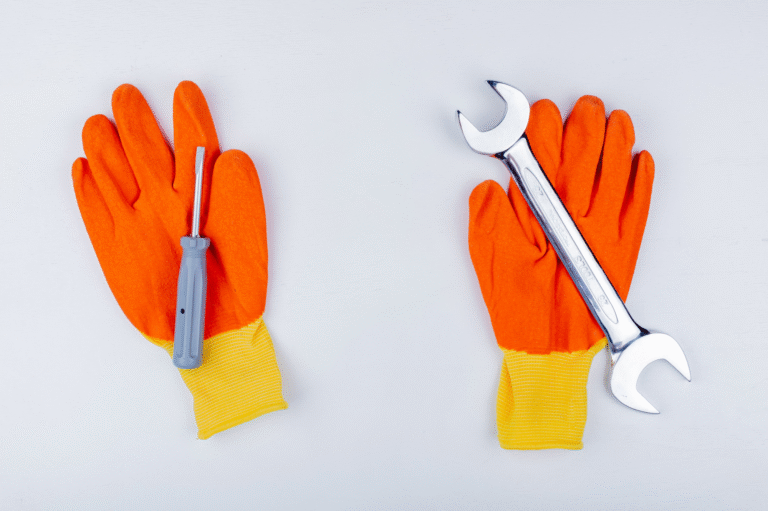Plumbing works come with different types of risks. This means that plumbing professionals need to wear safety gloves. But one has to know whether the gloves are at par with the industry standards.
Gloves are highly essential for plumbers, who are continuously performing different challenging activities and are prone to facing injuries. But with protective gloves at their disposal, the chance of this risk can be lowered to a considerable extent. The plumber will remain protected against an unhygienic environment and also not get cuts or abrasions on their hands easily.
However, purchasing any glove won’t do the job; they must be compliant with key industry standards. This will ensure that olumbers have adequate safety during work.
Need for Safety Standards in Plumbing Inspection
Plumbing works are not so convenient and may involve dealing with even hazardous substances, which denotes the requirement of safety standards. Hence, plumbers must have gloves included in their PPE safety equipment, among other tools and protective gear.
- Dealing with Hazards: While carrying out any plumbing work, a professional can be exposed to different hazards like a hot surface, chemical exposure, sharp edges, and bacteria. To refrain from these, maintaining the necessary safety standards is important.
- Preventing Property Damage: Different materialistic objects are associated with plumbing works. If the necessary safety standards are not followed, properties can be damaged. Issues like pipe leaks, structural breaking, and mould development may arise out of this.
What are the Different Types of Safety Glove Materials?
Before choosing any glove, a plumber must check the material. If you are handling hazardous chemicals, you can opt for a neoprene glove. Conversely, a nitrile glove can protect you from mechanical hazards. Let’s check out different safety glove materials.
- Nitrile gloves: Nitrile disposable gloves are commonly used in different plumbing inspections because they are durable and offer excellent resistance to chemicals, thereby complying with EN 374. However, this is an expensive option.
- Latex gloves: If you prioritise flexibility and comfort, then go for this option. Nevertheless, you might experience allergies while wearing it for a long time.
- Neoprene gloves: Neoprene gloves offer top-notch dexterity, and they conveniently resist weathering. The main drawback is its limited resistance to puncture.
- Leather gloves: Such gloves protect you from cuts while helping you to carry out different plumbing tasks. However, you cannot use it for handling hazardous chemicals.
What are the Major Industry Standards for Safety Gloves?
Before using safety gloves for any plumbing inspection, you must ensure that they comply with the following standards:
- EN 388: This European industry standard deals with the mechanical risks. Gloves for plumbing inspection must be resistant to abrasion. Also, they must be capable of resisting blade cuts, puncture, and tears. This states how effective your gloves are in protecting you from physical risks.
- EN 374: EN 374 confirms whether your gloves can protect you from chemicals. Five parts to this European standard evaluate various risks related to chemicals, like protection, degradation, and others. While using a safety glove, ensure that it can deal with hazardous chemicals.
- ANSI/ISEA 105: This American standard is a common consideration for a plumber before selecting a glove. This possesses a clear performance rating on whether a glove is safe from heat, cold, harmful chemicals, and abrasion.
How Can You Determine that Your Gloves Are Ignoring Industry Standards?
You need to check your safety gloves frequently to ensure that they comply with the industry standards. Whether you are using disposable nitrile gloves or latex gloves, compromising with the industry standards should not be done at any cost. The common signs of a poor pair of gloves are:
- Missing certification mark
- Wear and tear
- Poor fit and uncomfortable
Testing and Verification of Gloves
To perform plumbing inspections, having gloves adhering to industry standards in your PPE safety equipment kit is a pivotal consideration. Gloves must be tested and verified to understand whether they are safe for use. Let’s check out the key procedures.
- Visual Inspection: Before using safety gloves, check whether they are damaged or have cracks or peels. You need to change them even though they are off-coloured.
- Air Test: Inflate your gloves to check whether they are safe for use.
Some of the significant considerations are:
- Always replace the gloves that have visible damage
- Read the manufacturer’s instructions clearly for safe usage
- You can talk to other plumbing professionals to understand different use cases
Choosing the Right Glove: Fit and Comfort
Safety gloves must fit properly on the hands of the plumbers. This ensures safe handling of chemicals, materials, and tools. On the other hand, a poor-fitting glove or one that does not adhere to industry standards will pose risks and threats. This increases the chance of any accident because you might fail to handle any equipment properly.
Wearing comfortable gloves helps you carry out different plumbing works easily. You can get a good grip, and that is important in handling any sharp object or a harmful chemical. This helps in complying with the industry standards.
Summing Up
Gloves provide adequate safety to the plumbers while carrying out different tasks. Plumbers must not wear uncomfortable gloves as these increase the chance of accidents. Regular testing of gloves is important.
Evaluating Your Safety Gloves
Are your safety gloves complying with the industry standards? If not, change them. Find the probable ones that comply with the industry standards.


